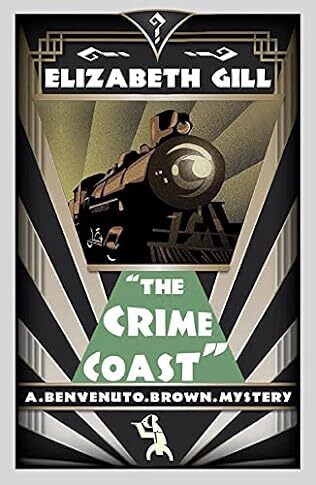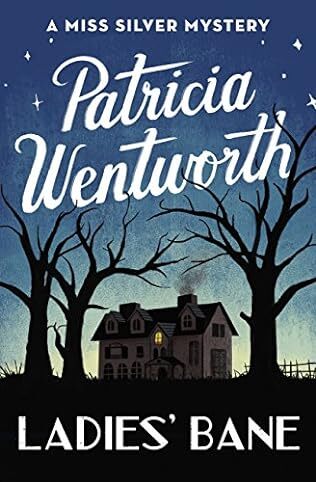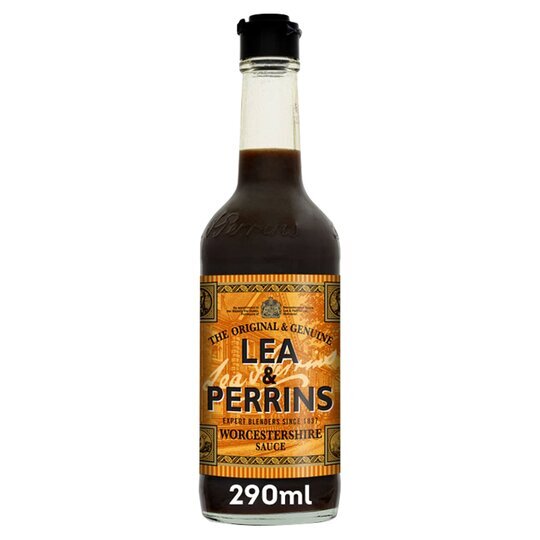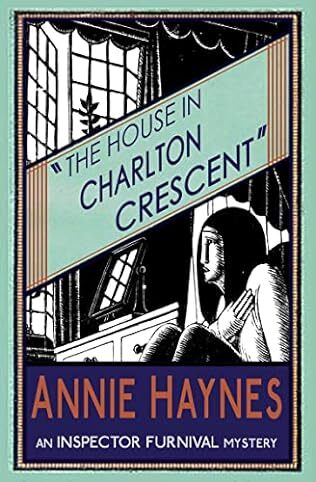Martin Fone's Blog, page 70
October 26, 2023
Loveday Kissing Gate Gin

When I am walking in the countryside, I much prefer to cross from one field to another through a kissing gate rather than over a cattle grid. The term “kissing gate” has been in use since the 16th century and describes a gate, usually sited in a gap in the hedgerow, consisting of a semi-circular, square or V-shaped enclosure on one side and a hinged gate that swings between two shutting posts. It allows one person at a time to pass through but presents an impenetrable barrier to livestock.
The name derives from the fact that the hinged part touches or kisses both sides of the enclosure rather than being securely latched on one side like a normal gate. It does, of course, allow courting couples to steal a kiss as one waits for the other to manoeuvre their way through the gate. In these inclusive times, kissing gates are rather frowned upon as they are well nigh impossible for wheelchair users and people with prams and bicycles to use and, to comply with the criteria established by BS5709 new kissing gates must be wide enough to allow two people to pass through at a time.
Nevertheless, they are a distinctive feature of the English countryside and its hedgerows, especially around the Falmouth area of Cornwall, and it is from these that an enterprising small Penryn-based distillery, Loveday Distilling, has drawn inspiration for its Loveday Kissing Gate Gin. This is the third in their series of gins, I have reviewed their Falmouth Dry Gin and Golden Hour Gin elsewhere, and Daisy, Chloe, and Ruth have come up with an intriguing gin in a stylish yet minimalist bottle.
Circular, made of clear glass, rounded shoulders, short neck leading to wide lips and a wooden stopper with real cork, it makes for a distinctive, if understated, presence on a gin shelf. The label at the front is long and thin, providing the minimum of information but telling me that my bottle is from Batch no 2, was distilled by Daisy and has an ABV of 40%. The rear label is larger, more informative, and has impressions of botanicals on the other side which can be seen through the clear bottle when viewing it from the front.
The pedigree of the brains behind Loveday is the catering industry in general and cheffing in particular. This sensitivity to and awareness of flavour combinations serves them in good stead for the production of tasty and distinctive spirits – they also produce organic, oak-rested rum. The signature botanicals in their Kissing Gate gins are all to be found in the hedgerows and woods of the area, chamomile, celery-scented lovage, and fresh gorse.
On the nose it has a delicate, floral aroma and the clear spirit does not disappoint when poured into the glass. The rhythm section of this gin is provided by bright citric notes and pine, allowing the delicate and fresher notes provided by the herbaceous botanicals a backdrop against which to strut their stuff. There is a distinctive sweetness and coconut feel to the drink and it signs off with a long-lasting, sweet celery finish.
As a gin, it is notably sweeter than their other two offerings and neatly complements the range rather than standing on one or the other’s feet. It is definitely refreshing and addictively, especially with a quality premium tonic and a slice of lemon as garnish. For those who like their gins with a herbal finish, it is definitely one to seek out.
Until the next time, cheers!
October 25, 2023
The Crime Coast

A review of The Crime Coast by Elizabeth Gill – 231012
Elizabeth Gill, the nom de plume of Elizabeth Joyce Copping, is another new author to me. In her short life, she lived to be just thirty-three, she published three crime novels, all featuring her exotically named amateur sleuth, Benvenuto Brown. The Crime Coast, which also goes by the alternative title of Strange Holiday, was the first in the series, originally published in 1929 and reissued by Dean Street Press. I have come rather late to the party.
It is an all-action affair with enough drama and twists and turns to keep even the most jaundiced of readers on the edge of their seat. There are some picaresque characters to enjoy, especially The Slosher, and Gill does a good job in portraying the rather ritzy and somewhat bohemian lifestyle of a fashionable Riviera resort such as St Antoine. It was also good to come up against an absinthe smuggler.
The story starts off with a newspaper report detailing some astonishing events at Bishop’s hotel in London. A rich Argentinian woman, Luela de Costa, was found smothered in her room wearing just her jewellery while, almost at the same time, a woman is relieved of her famous and valuable jewels. Gill uses the report to set the background against which her story unfolds. She then introduces us to Paul Ashby who is about to go on holiday to the south of France but his plans are somewhat disrupted when a Major Ashby drops in on him.
The Major reveals that he is a dying man, desperate to see his son, Adrian, who he believes is painting in southern France, and offers to pay Paul to track his son down. Despite having no obvious qualifications for the role and not knowing the Major from Adam, Paul surmises that the proposition offers a purpose to his jaunt and is money for old rope. Unsurprisingly, he agrees.
Inevitably, as experienced readers of the genre come to expect, coincidences abound. Adrian Ashby was romantically attached to Luela, the cause of the rift with his father, and Benvenuto Brown and Adelaide Moon, whom Ashby quickly falls in with in St Antione, are both friends of Adrian and are, in their different ways, prepared to lend a hand. It soon emerges that the younger Ashby is in some trouble, being accused by Luela of stealing some jewels which she had given him and having a violent quarrel with her on the lunchtime of the day she was killed. There was also another young woman who had visited Luela just before her death, and the police are anxious to talk to both.
Of course, unwittingly, Paul has teamed up with two people who know more about the case than they let on and one of the books interesting aspects is Paul’s eventual realisation that there is more going on that meets the eye.
Much time is spent investigating the alibi of Luela’s brother who seems to have gone to enormous lengths to establish his whereabouts for the period around his sister’s murder, but has been rumbled by an observant Benvenuto who just happened to be in the right place at the right time. Is he the culprit?
The resolution is much simpler than that and, frankly, is rather easy to spot, a case of devotion and dedication. The delicious irony is that both Paul and Adelaide have had clues for a long time without realising their importance. Benvenuto’s detective style seems to be following a lead, seeing what happens, and then working out what to do next. He does not seem to have the brilliance of other amateur sleuths and it will be interesting to see how his character develops. He does share one attribute, though, with many of his contemporaries, a rather loose relationship with legal justice, happier to allow natural justice take its course.
It was a delightful romp and I look forward to my next encounter with Benvenuto.
October 24, 2023
Ladies’ Bane

A review of Ladies’ Bane by Patricia Wentworth – 231005
Originally published in 1952, Ladies’ Bane is the twenty-second in Patricia Wentworth’s long-running Miss Silver series. Unusually, the spinster sleuth with an annoying cough, although she appears to deploy it less often than in earlier books, perhaps having helped herself to Mrs Miller’s cough mixture which plays a pivotal part in the denouement, is hired to prevent a murder from occurring rather than knit together the disparate strands that have led to a murder. However, readers who like to maintain their body count totals can rest assured, there are two deaths, even though Miss Silver succeeds in her mission. You cannot always help collateral damage.
The book opens with a familiar theme, a London peasouper, in which Ione Muir gets lost, stumbles and hurts herself, and while recovering overhears a conversation in which a Scotsman, worse for drink and whistling The Blue Bells of Scotland – is there any other sort? – appears to be negotiating a fee to do away with someone. She decides to follow him, using another stranger, Jim Severn, as a shield and, curiously, all three spend the night together taking shelter in a house. As is the way with these set ups, both of her chance companions will have roles to play as the plot develops, Severn providing the obligatory love interest and the dashing hero at the death.
Wentworth’s use of Professor MacPhail, one of the names of the Scotsman who is an illusionist whose stage name is the great Prospero and an assassin for hire, seems a missed opportunity. He turns out to be a killer with a conscience, who seeks to undo the damage he has done when he realises he has picked out the wrong target. MacPhail then seems to drop out of the story, having served his purpose as a plot device. There were several aspects of his character that I was hoping Wentworth would have developed as the plot unfolded.
The plot centres around familiar themes, two sisters whose fortunes pass on from one to the other, an impecunious man, Geoffery Trent, the wife of Ione’s sister, Allegra, who has ambitions to purchase the Ladies’ House, a creepy Gothic pile with secret passages and convenient spying holes, and thwarted love. The house, inevitably, is cursed, giving the book its title.
Miss Silver is invited to stick her knitting needles into the affairs at Ladies House by Josepha Bowden, a female explorer, another character who makes a fleeting appearance to serve as a plot device, who is worried about Allegra’s health. Allegra seems to have a cocaine habit and is barely aware of what is going around her. Ione is appalled at her decline when she comes to visit. Allegra’s fortune is dwindling as a result of poor investments while Ione’s wealth is increasing. If Allegra were to die, it would pass to her husband, Geoffery, and would be useful in purchasing the house. She survives one attempt on her life, when in a crush at a traffic crossing she is pushed in front of a bus.
Miss Silver is quick to spot that there is a plan afoot that imperils both the sisters’ lives and that as Ione is unmarried, it is she who is the principal focus of the plot. When she dies and her money passes to Allegra, then the second part of the plan can be enacted. But who is the mastermind?
The two characters who die, Margot, Trent’s niece and ward, a practical joker who is sent to her death when she is allowed to use a frayed rope from the gardener’s shed to abseil with, and Flaxman, the scheming butler, are killed because of what they know about what is going on at Ladies House. Knowledge can be a dangerous thing, but fortunately Margot has taken the trouble to document her suspicions in a diary. The desperate struggle to get possession of this incriminating document brings the story to a dramatic finale.
Miss Silver provides the psychological insights and inside gossip while Inspector Abbott collects the hard evidence. Once again, the dream team triumph in what is an entertaining if somewhat predictable read. The identity of the culprit will surprise no one.
October 23, 2023
Worcestershire Sauce’s Secret Ingredient

The precise ingredients of Lea and Perrins’ sauce remain a closely guarded secret, the bottle’s labelling being both helpful and vague. It lists malt vinegar, spirit vinegar, molasses, sugar, salt, anchovies, tamarind extract, onions, garlic, and various assorted and unnamed spices and flavourings, but there is no indication of quantities used.
The replacement of walnut pickle and mushroom catsup, a form of ketchup, with tamarind extract, a staple of Bengali cuisine, might have given Lea and Perrins’ sauce its Indian twist, allowing them to spin the tale of its exotic origin. In truth, though, it seems to have been a variant, or to use the modern culinary parlance, an elevation of some of the anchovy-based sauce recipes already extant.
Those with a heightened sense of taste believed that soy, which featured in Kitchiner’s recipe, was a key but undisclosed ingredient in Lea and Perrins’ sauce. The first to claim its presence in print was Allan Forman who wrote in an article in the Washington Post on July 25, 1886, that soy sauce was used “from the East Indies to England, where it is still more spiced and flavoured and patriotically called Worcestershire sauce”. Curiously, its presence was highlighted by its absence, supply difficulties of soy experienced during the Second World War led to its replacement by hydrolised vegetable protein.
Although Lea and Perrins have never explicitly named soy as a key ingredient in their Worcestershire sauce, proof positive was provided by a company ledger from 1907, rescued from a skip by Brain Keogh, archivist and author of The Secret Sauce (1997). A page headed “Return to old formula” gave the recipe together with quantities, revealing that the principal ingredients were 2.5 parts of vinegar and to one of soy. The rubric at the top of the page of the ledger, now on display at the Worcester City Art Gallery and Museum, suggested that this had been the case for decades.
An advertisement in the Observer of March 5, 1843, the first independent evidence of the sauce’s existence, claimed that Lea and Perrin’s Worcestershire Sauce, “prepared from the recipe of a nobleman in the country” had been “steadily progressing in public favour; its peculiar piquancy, combined with its exquisite flavour, establish it of a character unequalled in the sauces”, especially “for enriching gravies or as a zest for fish, curries, steaks, game, cold meat etc”. It was sold in three sizes, half-pint bottles costing 1s 6d, pints 2s 6d, and quarts at 5s, each “with the Proprietors’ stamp over the cork of every bottle”.
By 1866 Lea and Perrins had sold their chemist shops, concentrating their efforts on making and selling their sauce, which was becoming increasingly popular worldwide. Their success encouraged rivals to produce their own version of the sauce. To protect their brand Lea and Perrins introduced a new label in 1875 bearing their signature, “without which”, they warned, “none is genuine”.
They also resorted to legal action to deter competitors from branding their sauce Worcestershire. However, the High Court ruled that they did not own “the rights to the name “Worcestershire” in connection with a sauce such as that made by their company”, noting that since the sauce’s launch in 1837 “other people, of whom one Batty seemed to be the first, began to sell an article under the same name” (Times, July 26, 1876).
Nevertheless, the name of Lea and Perrins is synonymous with Worcestershire sauce today. I just wonder why they are so coy about soy.
October 22, 2023
Lost Word of The Day (80)

We are all probably familiar with the noun a rake in the sense of a dissolute character prone to womanising and gambling, examples of whose progress were followed to good effect by the likes of William Hogarth and Igor Stravinsky. What I was gloriously unaware of until recently was that it is an abbreviation of rakehell, a word that carried the same connotations.
It probably owes its origin to the Middle English adjective rakel, which meant hasty, rash, or headstrong. Attested to the 1540s it also spawned the adjective rakehelly and spawned a cousin in rakeshame, meaning someone who lives shamefully, in the 1590s.
An example of its use is to be found in The Bladish Briton, a song reproduced in The Bacchanalian Magazine of 1793, which included the following lines; “ye Rakehells so jolly, / who hate melancholy, / and love a full flask and a doxy; / who ne’er from love’s feats, / like a coward retreats, / afraid that the harlot shall pox ye”.
With a dissolute lifestyle, what is a hell between friends.
October 21, 2023
Lost Word Of The Day (79)

Although we seem to be swamped with information, I cannot help but think that many cannot see the wood for the trees, to be able to sift out the truth from the many competing shades of opinion. We seem to be in the age of the Gobemouche, a wonderful piece of cod French that describes a credulous person, one who believes all that they hear.
At its most literal, it means fly swallower, gober being the French verb for swallowing and mouche meaning fly. It appeared in Punch or the London Charivari in 1857 when a contributor noted that “The Gobemouche abounds in clubs, coffee-houses, Capel Courts, Bellamy’s, and all old women’s tea-parties”.
As elections loom, our politicians will hope that we are a country of gobemouches. Let’s hope they are proved wrong.
October 20, 2023
The House In Charlton Crescent

A review of The House in Charlton Crescent by Annie Haynes – 231003
Originally published in 1926 and reissued by Dean Street Press, this is the second in Annie Haynes’ series featuring Inspector Furnival and, despite its age, it is rather good. The murder victim is an irritable and rich old woman, the two qualities seem to go hand in hand, Lady Anne Daventry, who has the added indignity of not only discovering that her pearls have been stolen but is also stabbed in a crowded room with a dagger which belonged to one of her relatives.
Along with Lady Anne, four people are examining the dagger, John Daventry, Dorothy Fyvert, Margaret Balmaine, and Bruce Cardyn, when a pale face appears outside the window. In the confusion caused by the face at the window, someone takes the opportunity to stab Lady Anne. Soames, the butler, is on hand and discovers what has happened to her ladyship. As no one had the time to enter the room, commit the foul deed, and then leave undetected while everyone’s attention was diverted, the inevitable conclusion is that one of the five must have done it but who?
Prior to that Lady Anne Daventry had grounds for believing that someone was trying to poison her and contacted a private investigation company to give her protection. Bruce Cardyn took on the role and arrived at Lady Anne’s house in Charlton Crescent as her secretary, a fortuitous vacancy having arisen as the last incumbent, David Branksome, had left in a hurry a week or so earlier, always a suspicious move when dastardly deeds are afoot. However, Branksome, whose appearance has more than a passing resemblance to Sayers’ Lord Peter Wimsey, is nowhere Charlton Crescent when the murder occurred.
Perhaps the most fascinating character in the book is Cardyn. On one level he has catastrophically failed in his assignment of protecting Lady Anne’s life but as we learn more about him, we discover that there may be more than just sheer bad luck behind his failure. He has more than a passing interest in Margaret Balmaine and has met Dorothy Fyvert before, having rescued her from a burning building. He has his first major breakthrough when he realises that an actress by the name of Daisy Melville looks uncommonly like someone in the household.
Furnival arrives on the scene after the murder and while he is happy to receive information from Cardyn and work with him, the policeman leaves the amateur sleuth in no doubt that he is under as much suspicion as the others. Furnival ferrets away, there are several remarks that draw attention to his ferret-like characteristic which have earned him the sobriquet in the Yard, and realises that he has two distinct crimes to solve.
It is a tale where the identities and motives of several of the characters are not what they seem. The need to raise cash to avert impending financial disaster is a strong motive and while neither of the crimes are that difficult to solve, Haynes does her best in at least muddying the waters over the identity of the murderer until the end.
There is much to admire in this story and while some of the devices in the plot seem somewhat familiar, it is salutary to remember that Haynes was at the vanguard of the age of classic crime fiction and that where she went, others followed. She engages her readers with a simple style, throws enough conundrums and misdirection in to keep them on their toes, and produces an enjoyable piece of entertainment. You cannot quibble with that.
October 19, 2023
Bear Of The Week

News has reached of an exciting competition recently run by Katmai National Park in Alaska, Fat Bear Week. Early autumn is the time when bears pack on the pounds in readiness for hibernation and the Park had selected twelve porkers for their on-line fans to vote on between October 4th and 10th.
Two bears will compete against each other, the winner moving into the next round to face their next challenger until a champion is declared. The website has a detailed description of each bear’s attributes. One of the pre-competition favourites is 747, who has already won the competition twice and is described as being “typically very fat” by he end of the competition. Three times winner, Otis, is also competing, although advanced age has caused his teeth to deteriorate, making it difficult to pack the pounds.
The winner, though, was a female bear, Grazer, a mother to two sets of cubs, who beat the other finalist, Chunk, a male, by over 85,000 votes, in a contest which over the week attracted more than 1.4 million votes.
October 18, 2023
A Pocket Full Of Rye

A review of A Pocket Full of Rye by Agatha Christie – 230928
A tale of gullibility and revenge wrapped up in a plot drawn from a nursery rhyme, Sing a Song of Sixpence, makes up Christie’s seventh Miss Marple novel. Originally published in 1953, it has all the hallmarks you would expect to find in a Christie tale, and makes for an entertaining, if somewhat unchallenging, read.
As usual, there are three murder victims, the predictably odious paterfamilias and businessman, Rex Fortescue, whose shady dealings are only just the right side of the law, his wife, Adele, and a housemaid, Gladys Martin. Each death has its peculiarities. Rex is poisoned, seemingly while drinking his morning tea at his office, although it turns out that the poison to which he succumbed was the slower acting taxine which was smeared into the jar of marmalade he used at breakfast time. In his suit pocket was found some rye. Adele is found poisoned in her room after eating her bread and honey while Gladys is strangled in the garden and a clothes peg has been placed on her nose.
Conveniently, Gladys has worked for Miss Marple in the past and Miss Ramsbottom, the fearsome old battle axe living with the Fortescues, is a friend of the amateur sleuth. The indignities done to Gladys so outrage Miss Marple that she vows to bring the culprit to justice. The similarities of the forms of death meted out to the victims to the nursery rhyme do not pass Miss Marple by, although she is troubled by the fact that Gladys’ death seems to be out of sequence and that there is a remarkable absence of blackbirds.
The blackbirds soon make an appearance in three forms, some had been placed on Rex’s desk the previous summer and some found their way into a pie while one of Rex’s shadier deals involved the Blackbird mine in Africa, the outcome of which earned him the undying enmity of the MacKenzie family.
Add to the mix sibling rivalry between Percival and Lancelot Fortescue, exacerbated by the latter’s return to the family home as the prodigal son and the former’s concerns that his father’s deteriorating mental health is jeopardising the business, a bounty hunter in the form of the shady Vivien Dubois who turns out to be the sole beneficiary of Adele’s will, and Rex’s daughter, whose proposed marriage to Gerald Wright is vetoes by her father, and you have enough suspects to be getting along with.
Although Percival is the obvious suspect, things are not quite as simple as they might seem. The plot turns on assumed identities, a couple of the characters not being quite who they seemed to be. Sadly, Gladys is an unwitting accomplice, hoodwinked into believing that the drug she was adding to the marmalade was a truth drug, which would bring Rex to see reason.
Miss Marple realises who is behind the murders but is unable to furnish Inspector Neele with the evidence he needs to secure a conviction. This comes in the form of a letter which she opens on her return to St Mary’s Mead in which her former maid tells what she knows and includes an incriminating photograph.
Gladys’ murder can be avenged and Miss Marple triumphs once more. Formulaic it might be, but it is a good read.
October 17, 2023
Malice In Wonderland

A review of Malice in Wonderland by Nicholas Blake – 230926
This is another wonderful book from the pen of Nicholas Blake, the nom de plume of Cecil Day-Lewis, which also goes under the titles of The Summer Camp Mystery and The Malice with Murder. Originally published in 1940 and the sixth in his Nigel Strangeways series, the setting is Wonderland, a holiday camp that promises a superior experience for all the family. It allows Blake to draw in characters from different backgrounds, have a multitude of potential suspects and poke fun at the newest of holiday experiences. While the week at Wonderland might not have been the fun experience that the holidaymakers anticipated, it provides the reader with a glorious romp.
There are some wonderful characters, not least the rather pompous and sententious Mr Thistlethwaite, the sort of person who tends to make himself the de facto leader and fount of all wisdom in a mixed crowd and his daughter, the lively Sally, who develops an on-off love relationship with Paul Perry, who is a Mass Observer detailed with analysing the thoughts and preferences of the happy campers, but whose role takes on a more mysterious and darker hue. The principal staff members are the bureaucratic Mortimer Wise, his athletic brother, Teddy, and the very efficient and beautiful secretary, Esmerelda Jones. Blake’s characterisations are sharp and to the point, his protagonists coming to life on the page.
It would be wrong to characterise this book as a murder mystery. There is, of course, a murder but it is rather a side issue and dealt with relatively quickly, explaining the mysterious behaviour of an old, bearded hermit seen in the woods, who has so terrified Sally, and whose presence, near a naval base, allows the prospect of a war and hostile espionage to intrude into the book. The focus is more on the behaviour of the Mad Hatter, a practical joker who unsettles guests and staff alike with a series of pranks. Several guests, including Sally, are pulled underwater, tennis balls are smeared with treacle, a concert is ruined when treacle is poured over the strings of a piano, a dog in the much publicised but ill-used animal facility open to the furry friends of guests is poisoned and dies.
The atmosphere in the camp changes, rumours circulate, guests are suspicious of each other, and the staff fear that the joker is leading up to a more serious crime. Strangely, Mortimer Wise, the camp’s manager, is reluctant to call in the police, fearing, or so he says, the consequence of adverse publicity, even though reports of the incidents at the camp have been leaked to the press. On Thistlethwaite’s recommendation, Nigel Strangeways is called in to investigate.
Incidents continue to occur. A guest develops blisters on her arms, not unlike those caused by exposure to mustard gas, and someone takes a pot shot that grazes Mortimer Digby’s ear. Strangeways begins to see a pattern and cold and calm analysis of each of the incidents shows that there can only be one source of the mischief. The motivation is a little harder for the reader to deduce and, frankly, it is the least convincing aspect of the book. Strangeways realises that the outlier, the shot fired at Digby, is not the work of the Mad Hatter but an entirely separate incident with a separate culprit. So, we get three sets of “crimes” for our money.
Blake delights in the opportunities that the name of the holiday camp gives him and there are several Lewis Carroll references to spot. It might not be a complex plot, but is a whole lot of fun, a book to be read on your sun lounger, sipping something long and cold and thanking your lucky stars that you are not at Wonderland.



